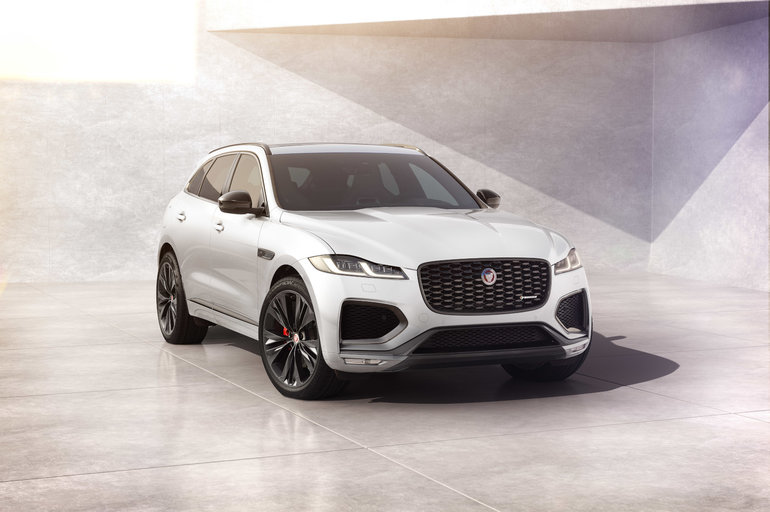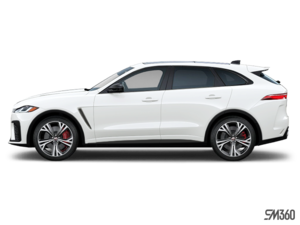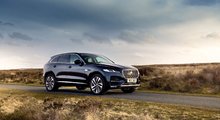The Art of the Automobile: A Guide to Jaguar's Design Philosophy
July 31 2025,

Walk past a parking lot full of SUVs and most blur together in a sea of similar shapes. Then you spot a Jaguar F-PACE, and something makes you pause. The proportions look different. The stance appears more athletic. The lighting signature catches your eye in a way that other vehicles don't.
This reaction happens by design. Jaguar approaches automotive styling as art rather than mere transportation. Every line, curve, and surface serves a purpose in creating emotional connections between vehicle and viewer. Understanding these design principles helps explain why Jaguars stand out in any crowd.
Drama Through Proportion
Jaguar designers start with proportions that suggest movement even when parked. The brand favors long hoods, pushed-back cabins, and muscular rear haunches that create visual tension. This approach stems from Jaguar's racing heritage, where aerodynamics and performance shaped every curve.
The F-PACE demonstrates these principles in SUV form. Despite its practical height and cargo space, the roofline flows like a coupe's profile. The wheels sit at the corners rather than tucked under the body, creating a planted, ready-to-pounce appearance that separates it from boxier competitors.
Window graphics play a crucial role in this visual drama. Jaguar uses what designers call the "graphics package" – the relationship between glass and metal surfaces – to create the illusion of forward motion. Side windows taper toward the rear, suggesting speed and direction.
The Signature J-Blade
Every Jaguar features the distinctive J-Blade design element, though it appears differently across the model range. This signature lighting treatment creates instant brand recognition while serving functional lighting purposes. The J-Blade originated from Jaguar's racing DNA, where distinctive lighting helped identify cars during night races.
On current models, the J-Blade appears as LED daytime running lights that trace the letter "J" shape. This element works both during day and night, creating a memorable visual signature that announces the vehicle's presence. The design scales appropriately across different vehicle sizes while maintaining consistency.
J-Blade Applications Across Modern Range:
- F-PACE: Integrated into headlight assembly
- F-TYPE: Dramatic standalone elements
- XF sedan: Refined, elegant interpretation
- I-PACE: Futuristic, electric vehicle adaptation
Sculpted Surfaces Tell Stories
Jaguar bodywork features what designers call "taut surfacing" – panels that appear stretched over the mechanical components underneath. This technique creates the impression that form follows function, even when aesthetics drive the actual shape. The goal is making observers believe they can see the bones of the vehicle through its skin.
Body sides feature subtle character lines that catch light differently throughout the day. These lines create shadow play that adds visual interest without appearing fussy or overdone. The surfaces flow smoothly from front to rear, avoiding the chopped-up appearance that comes from too many creases or decorative elements.
This approach extends to details like door handles, which sit flush with the body surface when not in use. Window surrounds, trim pieces, and even badges integrate seamlessly into the overall design rather than appearing as add-on elements.
Functional Beauty in Lighting

Jaguar lighting design balances visual drama with practical illumination. Headlight shapes complement the overall front-end design while providing optimal light distribution for night driving. LED technology allows designers to create complex shapes that would be impossible with traditional bulb-based systems.
Rear lighting follows similar principles, with taillight shapes that reinforce the vehicle's character. The F-PACE features wraparound taillights that emphasize width and stability. When illuminated, these lights create a distinctive nighttime signature that's recognizable from significant distances.
|
Design Element |
Purpose |
Visual Impact |
|---|---|---|
|
J-Blade DRL |
Brand recognition |
Instant identification |
|
Sculpted sides |
Light and shadow play |
Dynamic appearance |
|
Flush details |
Clean surface flow |
Premium quality feel |
|
LED graphics |
Distinctive signatures |
Memorable presence |
Interior Architecture Follows Exterior Themes
Jaguar interior design extends the exterior's dramatic themes into the cabin space. Dashboard surfaces flow from one element to the next, creating a sense of continuous motion even while stationary. The goal is making occupants feel wrapped in the design rather than sitting in a box with added decorations.
Material selection reinforces the premium positioning without appearing ostentatious. Leather surfaces feature carefully designed grain patterns that complement the exterior's taut surfacing. Metal trim pieces echo the exterior's clean lines and precise execution.
Technology integration follows the same principles as exterior design – function first, with form supporting the user experience. Touchscreen interfaces appear to float within the dashboard architecture, while physical controls feel substantial and precisely engineered.
Evolution Rather Than Revolution
Jaguar design evolves gradually rather than changing dramatically with each generation. This approach builds brand recognition over time while allowing for technological advancement and changing customer preferences. Core design themes remain consistent while details adapt to contemporary trends.
The current design language traces its roots back to iconic models like the E-Type and XJ220 supercar. Modern interpretations translate these classic proportions and themes into contemporary vehicles that serve today's practical needs while maintaining emotional appeal.
This evolutionary approach means that a 2025 Jaguar clearly relates to models from previous decades, creating a sense of heritage and continuity that purely trend-driven designs cannot match.
Experiencing Design in Person
Jaguar design philosophy becomes most apparent when you see these vehicles in person. Photographs capture basic shapes and proportions, but they cannot convey the subtle surface transitions and light play that make Jaguar styling distinctive. The quality of panel gaps, paint finish, and detail execution all contribute to the overall design experience.
Learn more about Jaguar's design approach and see how these principles translate into real vehicles at Decarie Motors Jaguar. Our showroom displays multiple models that demonstrate the brand's commitment to automotive artistry.




